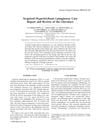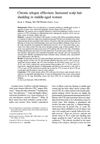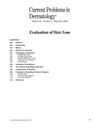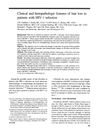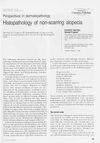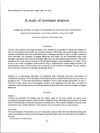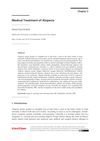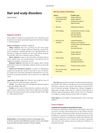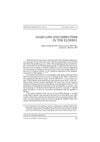Hair and Systemic Disease
October 2001
in “
Dermatologic Clinics
”
alopecia telogen effluvium anagen arrest chemotherapy systemic lupus erythematosus scarring alopecia discoid lupus erythematosus androgenetic alopecia androgens hair shaft defects Trichothiodystrophy Menke's syndrome hypertrichosis hirsutism polycystic ovarian disease Cushing's syndrome SLE DLE PCOS
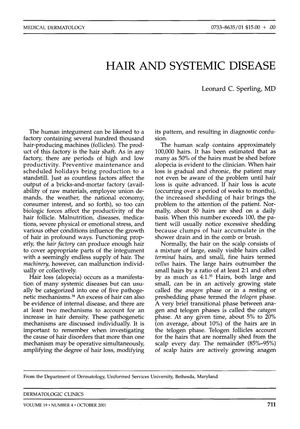
TLDR Hair loss can indicate underlying systemic diseases and addressing these can sometimes reverse the hair loss.
The document from October 1, 2001, explains that hair loss can be a sign of systemic diseases and outlines five pathogenetic mechanisms of alopecia. It describes the hair growth cycle and notes that shedding over 100 hairs per day is abnormal. Telogen effluvium, a common hair loss in systemic disease, is usually reversible if the underlying cause is addressed. The document also covers anagen arrest, which can be caused by chemotherapy or diseases like SLE, and scarring alopecia, which results in permanent hair loss due to follicle destruction by conditions like discoid lupus erythematosus. Androgenetic alopecia is linked to androgens and genetics. Hair shaft defects can also indicate systemic diseases, with conditions like Trichothiodystrophy and Menke's syndrome causing brittle or abnormal hair. Hypertrichosis and hirsutism are excessive hair growth conditions that can be signs of underlying issues, such as polycystic ovarian disease or Cushing's syndrome. The document emphasizes the diagnostic importance of hair changes for systemic diseases.
